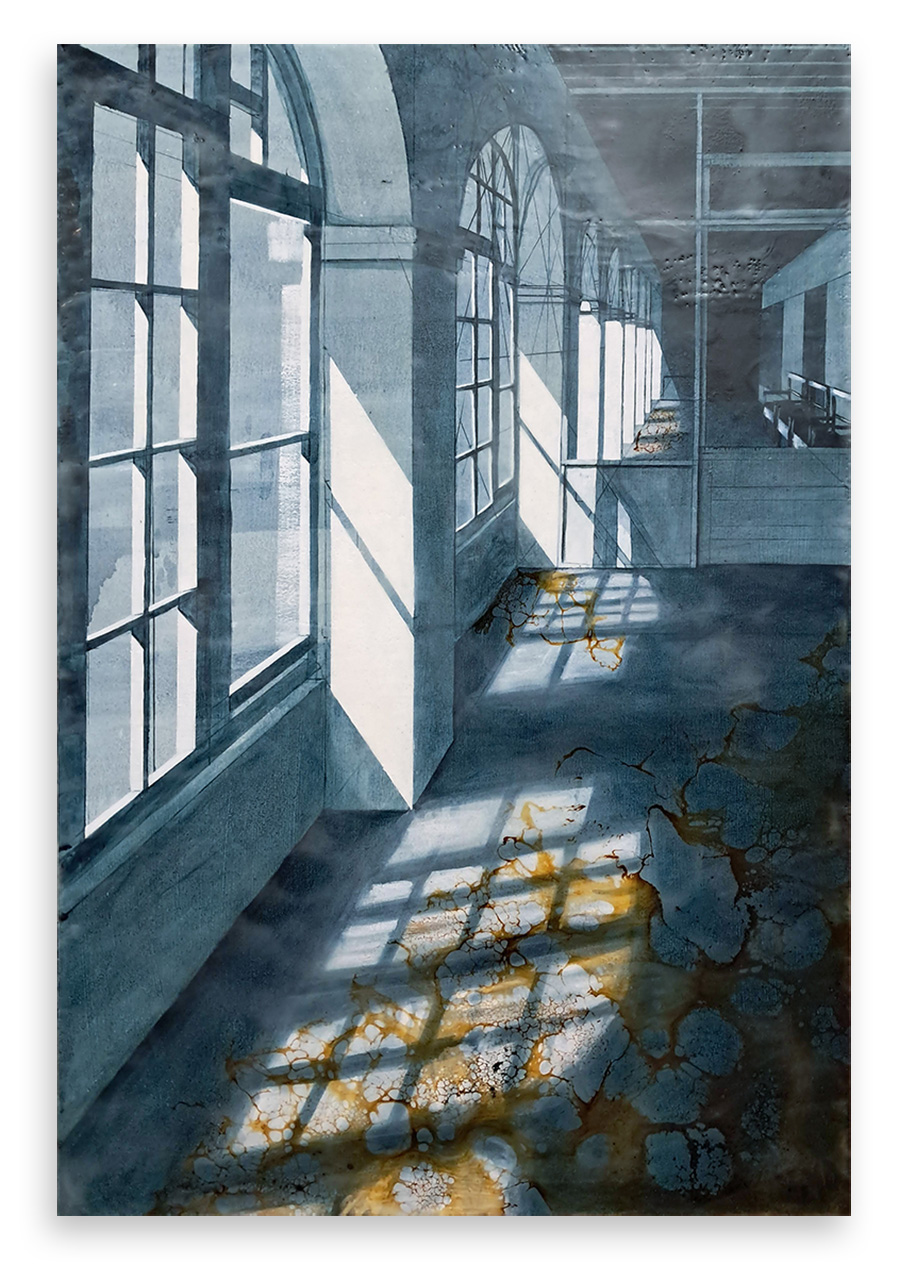Spectre
Oceanside is haunted. Catastrophic change in the region prompted me to embalm this place in paint as an act of mourning that amounts to a funerary practice. Over time, new layers of meaning have emerged alongside my creative, local, and academic research, shifting this work further inwards as I reflect on forgotten pasts and lost futures. I have always sensed the gravity of these spaces, but knowledge of the layered past made it real. My paintings interrogate what it feels like to belong to a space that is full of ghosts.
This body of work develops an archive of light, shadow, and anachronistic architectural details. These features function formally as indicators of space, atmosphere, mood, and time. Light and shadow hover above while simultaneously living within. Intellectually we know these atmospheric qualities move and change, yet in the frozen space of the picture plane they resist impermanence. Conceptually, they allude to the layers of memory and human experience imprinted within a place. These formal elements infuse the work with a hauntological perspective of Oceanside – a nonverbal language for the ephemeral.
Transmitting the uncanny experience of these spaces, I give the viewer moments of intellectual uncertainty tethered to reality. The melancholy and mystery of place unfold in the depiction of nonlinear time; layers upon layers of moments existing simultaneously. Incorporating site-specific materials from demolished structures, my paintings function as reliquary, infused with contained memory. In recent experiments, wax combined with representational mastery becomes a metaphor for memory – the malleable substance that distorts the photography of our mind. Layers of spontaneous process-based aberrations in these recent tests give way to faithful depiction.
My practice nods to art history, engaging established forms and techniques. My personal source photographs function as plein air references in my practice, a collaboration between the intuition, eye, camera, and nature. Photographs record reality, while painting is a wish—an illusion, a dream, a mystery. While the work strives for fidelity in representing hallowed spaces, they maintain a painterly quality that reminds us of the transience of physical spaces.
I cherish these fortunate discoveries with my camera—the synchronicity of a fleeting moment. I am fortunate to be in that space at that time as a witness to light, shadow, and angles, all aligned. This commonplace moment, taken for granted, will never be like this again. In these spontaneous scenes, light and shadow sing in unison. Having lived in spaces of denial - prison, addiction, withdrawal, depression - fleeting moments of freedom are illuminated for me. My work is more than social commentary on gentrification or displacement; this is psychological and spiritual work, a laborious and time-consuming act of love, remembrance, and preservation of communal memory.
To read my research, please click here --------> ︎





















